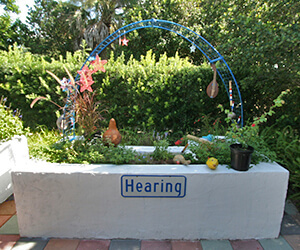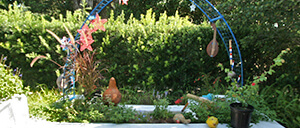Sensory Gardens

Florida-Friendly Landscaping™ in a Minute
Episode Archive
Episode #229 | Original Air Date: January 14, 2021
Related Resources
Transcript
In sensory gardens, plants and other design elements provide experiences for seeing, smelling, hearing, touching, and tasting. Sensory gardens can be created in spaces of any size, including containers.
Some sensory gardens are devoted specifically to one sense, while others focus on several senses.
Sensory gardens are used for teaching, socializing, and therapy. These gardens can be designed for specific users, such as children or the blind. Raised beds and wide pathways can make sensory gardens accessible to all.
Sensory gardens encourage interaction with plants, so interpretive signs and access to the plants are important. Choose plants that are people-friendly and use as few pesticides as possible.
Florida-Friendly Landscaping™ in a Minute is a production of the University of Florida’s Florida-Friendly Landscaping™ Program, IFAS Extension, and WUFT-FM in cooperation with the Florida Department of Environmental Protection.

